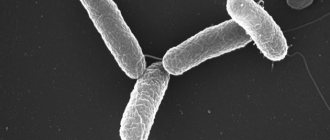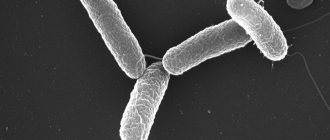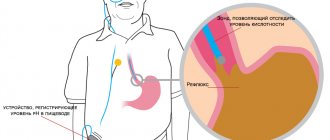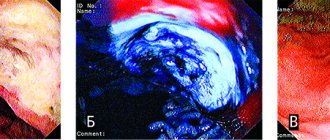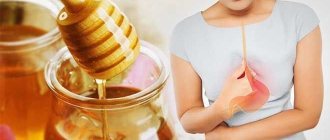Is it possible to kill yourself with chicken eggs? It turns out that it is quite possible - the microbe Salmonella enterica lives in a product familiar to every housewife. According to statistics, salmonellosis takes the leading place in the number of deaths caused by food poisoning.
The bacterium is especially dangerous for children, elderly people and people with weak immune systems. And it becomes more difficult to cure strong people every year - salmonella has lost sensitivity to a number of antibiotics. Therefore, you need to remember the dangers when you want to eat a chicken egg.
Where is the pathogen located?
Salmonella is a resident of the intestinal tract of domestic birds - chickens, ducks, geese.
But since geese and ducks are rarely eaten, infection occurs to a greater extent due to crested laying hens. Among poultry, approximately a quarter of chickens and 70 percent of geese and ducks are infected with salmonella.
The birds themselves do not get sick - they are carriers of the microbe.
Salmonella can be found in eggs and poultry meat. The top of the egg is covered with a porous calcareous shell. Due to the fact that the egg passes through the bird's cloaca, it is contaminated with a huge number of microorganisms, including salmonella.
Eggs become infected not only from the outside, but also from the inside. Salmonella penetrates the shell and, getting into the protein, begins to actively multiply.
Causes of salmonellosis
There are several sources of salmonella infection:
- Poultry and domestic animal meat that has been insufficiently cooked. During the processing process, infected animal feces can become contaminated with meat. The appearance and taste do not change when the product is infected.
- Fruits and vegetables. Salmonella does not live on plants in their natural environment. The causative agent of salmonellosis penetrates vegetables, fruits and herbs when they are irrigated with contaminated water. In addition, infection of these products is possible when they are stored next to raw meat and eggs.
- Raw poultry eggs. Droppings on the shell occur when eggs pass through the cloaca. Since the shell is porous, bacteria penetrate through it, infecting the inside of the egg. Also, salmonella can get from a sick chicken into the yolk and white even before the eggshell is formed.
How is the infection transmitted?
In summer, raw foods are always a danger. But eggs with salmonella can be dangerous not only in summer, but also in the harshest winter.
No matter how much you refrigerate the product, the bacteria will not die - it can live and multiply in the refrigerator for up to 12 months. By eating a raw product or preparing a protein-based cream for a cake, a person runs the risk of getting pathogenic salmonella.
Interesting fact! Salmonella penetrates human cells so quickly that scientists propose using it in the fight against viruses - the microbe can become a kind of transport for delivering medicines to diseased organs.
But this will come true in the future. Today, salmonella is the most dangerous bacterium, from which you can die, and which is almost impossible to detect by any signs on the product - contaminated meat or eggs may not smell or change.
The main danger is that salmonella affects foods adjacent to harmful eggs and the walls of the refrigerator.
A person can become infected with salmonellosis in catering establishments where sanitary standards are not always observed and eggs are purchased cheaper from unscrupulous suppliers.
Eggs may be broken and not sanitized. All kinds of desserts, dishes, and baked goods are prepared from them, and people run the risk of contracting salmonella simply by eating a serving of ice cream on a hot day.
Myth 3: you can recover from salmonellosis yourself, just take antibiotics
Salmonellosis is a serious, sometimes even fatal disease. Quite often, sick people require medical care in a hospital setting. You should be aware that self-administration of antibiotics can lead to adverse consequences, including:
- development of bacterial resistance to the drug used;
- chronicity of the disease;
- deterioration of the patient's condition due to ineffective treatment;
- development of dysbacteriosis, allergic reaction.
Therefore, antibacterial therapy should be used only as prescribed by a doctor.
Does salmonellosis occur in quail eggs?
Quails have a body temperature much higher than chicken (40 degrees), so salmonella practically does not live in quail meat - it is very difficult for it to multiply there. And even if it lives, the bacteria will not be able to penetrate into the egg - the thin, fragile shell has much smaller pores, unlike a chicken shell.
Those who like eggnog, fried eggs or creams should prefer quail eggs.
They are healthier than chicken eggs, containing three times more microelements and vitamins. Quail eggs are recommended for small children due to their hypoallergenicity.
Symptoms of salmonellosis
The clinical picture of the disease develops after the completion of the incubation period. The incubation stage lasts from several hours to 3-4 days. Symptoms of salmonellosis vary depending on the form of the disease:
- Gastrointestinal form. The disease begins acutely, with an increase in temperature to +38...+39°C, weakness, chills, and dizziness. Disorders of the gastrointestinal tract are characterized by the presence of vomiting, diarrhea, flatulence and pain in the epigastrium and umbilical region.
The features are as follows:
- with a mild course of the disease, there is no fever, single vomiting, stool up to 3-5 times a day, liquid or pasty, sometimes foamy or watery, with mucus and greens;
- in severe cases, the patient is bothered by uncontrollable vomiting and profuse loose stools, as a result of which dehydration develops with impaired cardiac activity and the appearance of neurological symptoms.
- Typhoid-like form. The onset is acute, with high body temperature up to +39...+40°C, vomiting, loss of appetite. Characteristic signs are: a sharp loss of strength with a decrease or complete cessation of motor activity and a state of stupor with the appearance of delirium. The tongue is coated, the abdomen is swollen, painful on palpation. After 5-6 days from the onset of the disease, a rash appears on the patient’s body: pink or red round spots of a convex shape. The first improvements occur 1.5-2 weeks after the onset of the disease.
- Septic form. It develops as a complication of the gastrointestinal form when the infectious process spreads. It is characterized by prolonged fever (high temperature can last for about a month), the formation of purulent foci in other organs with the development of pneumonia, otitis media, meningitis and other infectious and inflammatory diseases. The stool is frequent and has pathological impurities: mucus, greens. This form of salmonellosis is rare: in elderly people, with immunodeficiency, in premature babies and infants.
- Erased form. It occurs in the form of mild dysfunction in the digestive tract due to the entry of a small amount of bacteria into the body. The stool is mushy, without pathological impurities, up to 3 times a day. The patient may complain of discomfort in the abdominal area. The disease heals spontaneously within 1-2 days.
- Salmonella bacteria carriage. There are no clinical manifestations of the disease. Salmonella is cultured from feces. Most often, bacterial excretion ends 2 weeks after the onset of the disease. In severe forms, a person remains infectious for several months.
How to check a product for infection?
Salmonella can be detected in a product only in laboratory conditions. But the risk of contracting the bacteria is much lower if the eggs purchased are fresh. Their shelf life at a storage temperature of 0-25 degrees is, according to GOST, 25 days from the date of sorting.
Eggs purchased at the local market are not marked, but their freshness can be checked in a simple way - by placing them in a container of cold water. Stale ones will turn over and rise with the blunt end up; very old ones may even float up.
If, after breaking an egg, you see that the yolk is very smeared, has lost its shape and has spread out into the white, then there is a possibility that it has been laid for a long time.
Treatment of salmonellosis
Treatment of salmonellosis must be comprehensive. It is necessary to provide the patient with a balanced diet and prescribe therapy that not only affects the pathogen, but also relieves the symptoms of the pathology. In case of poisoning by products contaminated with salmonella, they must be removed and disposed of.
The patient needs to drink a lot of fluid - at least 2.5-3 liters per day - to replenish water losses through vomiting and loose stools. A gentle diet is required - porridge, low-fat soups, boiled and baked dishes. Meals should be fractional, overeating should not be allowed.
The patient requires hospitalization in case of severe forms of salmonellosis; in other cases, treatment can be carried out at home under the supervision of a doctor.
For mild to moderate severity, the following is indicated:
- rehydration solutions (for example, Regidron) - in order to restore the water-salt balance;
- enzyme preparations (Creon, Festal) - to improve digestive processes;
- antihistamines - with a pronounced allergic component (Suprastin, Tavegil);
- antipyretic drugs (Nurofen, Panadol);
- antidiarrheals (Imodium, Loperamide) or sorbents (Smecta, Polysorb) - if the frequency of loose stools is more than 3-4 times a day;
- antispasmodics (Papaverine, No-shpa) - for severe abdominal pain;
- antiemetic drugs (Cerucal) - for persistent vomiting;
- probiotics (Bifiform, Linex) - to restore intestinal microflora.
In severe forms of salmonellosis, infusion therapy is additionally carried out (introduction of glucose-salt solutions into the bloodstream in order to correct pathological fluid losses by the body). If necessary, therapy is carried out aimed at relieving neurological symptoms.
Antibiotic therapy is used only for severe forms of the disease. This is due to the fact that salmonella are resistant to most antibacterial drugs. The clinical effect of their use is quite low. Antibiotics are administered intravenously, the drugs of choice are: Gentamicin, Amoxiclav, Rifampicin. The course of treatment is no more than 5-7 days. Repeated courses are not advisable. After treatment with antimicrobial agents, it is necessary to take drugs that restore intestinal microflora.
Preventive measures against infection
The bacteria are killed by boiling and frying at temperatures above 70 degrees. At 100 degrees it dies within 3 minutes. Therefore, you should not take risks and enjoy eggs “in a bag”, or fried eggs.
For eggs, temperature treatment should be at least 10-15 minutes after the water boils. When cooking scrambled eggs, you should not try the unfried dish or lick the spatula.
Other preventive measures must be followed:
- for cutting raw foods, use a separate board and knife;
- store raw and cooked foods on separate shelves in the refrigerator;
- cook chicken meat for at least 1.5 hours;
- Be sure to boil whole milk;
- Eggs must be washed with detergent before use.
The onset of salmonellosis is very similar in symptoms to the flu.
High fever, aching bones, and headache appear. At the first signs of illness, you need to call a doctor, and then your timely diagnosed illness will not result in unpleasant complications. Video on how to check eggs for freshness and protect yourself from salmonellosis:
Salmonellosis
This can be called salmonellosisThe twentieth and twenty-first centuries are characterized by the emergence of new, hitherto unknown diseases - AIDS, salmonellosis, atypical fever... As historical documents say, from 1881 to 1914 twelve types of salmonella were identified in Russia, and in 1992 their number jumped to two and a half thousand , and the Second World War gave rise to fifty new types of Salmonella bacteria. Now there are (don’t be alarmed, reader) about two thousand! Such an incredible amount does not mean that infection means illness or even death. The situation is under control.
Carriers of infection are chickens
The disease occurs with fever, nausea, vomiting and repeated loose stools. The more microbes enter the body, the more severe the person’s condition and the worst it is for children. The main source of infection are birds, primarily chickens. Salmonella is found in their meat, eggs, both on the shell and inside - in the yolk. Eggshells are an ideal place to preserve germs. Scientists have noticed that it is primarily chickens on poultry farms and poultry farms that are infected, and not chickens from villages roaming freely on the street. The reasons for this are overcrowding of birds and contaminated feed. The recent increase in the incidence of salmonellosis is directly related to industrial poultry farming. It turns out that we have all become hostages of progress.
The question inevitably arises: why not break up large farms and change the balance of substances in chicken feed? But, no, this is not so much a social issue as an internal political one. Secondly, salmonella change rapidly and this process is constant. All domesticated birds are susceptible to salmonellosis (chickens are the leaders), and only quails do not get sick. They serve as a kind of indicator of the quality of feed. The problem of increasing infectious diseases has long been a concern not only for the public, but also for the government. Therefore, the All-Union Salmonella Center was created at the Central Research Institute of Epidemiology of the USSR Ministry of Health. So the fight against these insidious bacteria is declared to be life and death. And not only by scientists, but also by practitioners throughout Russia.
The paradox is that salmonellosis, unlike most intestinal infections, primarily spreads not in areas with unsatisfactory sanitary living conditions and poor nutrition, but in comfortable cities with a high level of economic development. You can even get infected through tea
In many vital parameters, our district is ahead of the rest of Russia, unfortunately, and in terms of the incidence of salmonellosis. Over the six months of this year, it exceeded the Russian average three times and amounted to 581 people, and the number of sick children was seven times more than adults. The most disadvantaged areas are the city of Yugorsk and the Surgut region, where large outbreaks of salmonellosis occurred. A particularly striking example is in the Ugra kindergarten “Firefly”, where 132 cases of this disease were registered. Among the sick are employees - cooks, loaders, teachers, warehouse manager and, of course, children.
A special commission found that the May outbreak of salmonellosis in Svetlyachok occurred due to “violation of sanitary and epidemiological requirements, which resulted in a massive illness with salmonellosis.” The most incredible thing: Salmonella was found in canned fruit compote and tea with lemon. A criminal case has been opened. The kindergarten was closed and disinfected. The regional veterinary service of the Sovetsky district and the Rospotrebnadzor department conducted 78 inspections of cafes, canteens, and kindergartens. The Ugra case is not isolated and the problem of salmonellosis in the district is far from being resolved, although the most effective measures are being taken to achieve this from various services - medicine, veterinary medicine, education...
In my hands are a number of official documents: minutes of a conference call held by Natalya Zapadnova, First Deputy Prime Minister; resolution of the interdepartmental sanitary and anti-epidemiological commission, chief state sanitary doctor for the district N. Kashapov. They are dedicated to the stabilization, reduction and prevention of acute intestinal infections, including salmonellosis. “The leading factors in the transmission of the pathogen during salmonellosis are poultry products prepared in violation of technology. Raw materials infected with salmonella are still being imported into the district. In 2007, the situation with intestinal infections worsened, sixteen percent higher than last year.
Eggs can be contagious
Eggs and chicken meat are among the most common and inexpensive foods. There are four poultry farms in the district, but their products are not enough for Ugra residents. Businessmen import tens of thousands of eggs and thousands of kilograms of chicken meat and semi-finished products from it into the district. All this should not pass by the watchful eye of the controlling veterinary and sanitary authorities, but it is absolutely impossible to examine every egg and even chicken, so inspections, although regular, are selective and joint, comprehensive, when the team includes specialists from Rospotrebnadzor, Rosselkhoznadzor, and the veterinary department. Each batch of eggs and chicken products arriving in the district must initially have the necessary documents - about the epidemiological state of the farm and specifically about salmonellosis, where the goods were taken from, a quality certificate, and so on. If even one document is in doubt, the goods are carefully examined before they are unloaded from the carriage or from the vehicle. But again, only selectively. Scheduled comprehensive inspections are carried out once a year, but there are so many unscheduled inspections! There are and are actively used articles of the Criminal and Administrative Codes on the punishment of those responsible for violating sanitary and veterinary standards when importing and selling eggs and chicken products. Those found guilty may be fired from their jobs and fined. The paragraphs of the resolutions of the interdepartmental sanitary and anti-epidemiological commission and the chief sanitary doctor of the district look like a guide to action for the near future and the future of municipalities, education and health departments, veterinary departments, Rosselkhoznadzor, internal affairs, heads of poultry farming and poultry processing enterprises, public catering... These are quite voluminous documents and, I assure the reader that they provide not only for measures to improve the quality of raw materials and food preparation from them, but also for hygienic training of employees, systematic inspection of farms for salmonellosis, and so on.
Cleanliness is the key to health
“Trust in God, but don’t make a mistake yourself,” says the Russian proverb, as it applies to lovers of chicken products. We ourselves need to be vigilant when using eggs and meat for food. Salmonella is very stable in the external environment and can persist in food raw materials and on objects around us for a long time. And in dairy products, salads, jellies and multiply. You can become infected by eating undercooked meat from ducks and chickens, as well as undercooked and undercooked eggs. When an egg breaks, salmonella enters the scrambled egg and then into the human body. If the egg has been stored for more than 25 days, salmonella can penetrate the yolks. It is possible that salmonellosis can spread through contact and household contact from patients through dirty hands and household items. Every person, at least once in his life, has experienced unpleasant symptoms of an intestinal disease. After recovery, unpleasant sensations are forgotten and, unfortunately, the rules of prevention are also forgotten.
Albina GLUKHIKH, photo by Timofey SERGEEV
To protect yourself and your loved ones from salmonellosis, we remind you of the extremely simple rules of prevention:
1. Do not buy eggs and chicken from unauthorized retail outlets. 2. When buying an egg, you need to pay attention to the egg sorting date, which is indicated on the egg itself and the box. The shelf life of eggs from the date of sorting is 25 days, dietary eggs are 7-10 days. 3. In the store and at the market, pay attention to the proximity of raw and finished products. Their sale should be carried out in different departments, by different sellers. If the seller weighs raw chicken, meat and sausage with cheese on the same scales, which is unacceptable, we advise you to go to another store. 4. Meat and poultry should be stored in packaged form in the home refrigerator, preferably on a separate freezer shelf. 5. Eggs must be stored in the refrigerator in special cells. Cells for storing eggs should be washed as often as possible. If there was no salmonella on the shell, and the refrigerator compartment was dirty, you can be sure that salmonella will definitely get into your scrambled eggs. 6. Before cooking, the egg must be thoroughly washed with soap and running water. You need to cook the egg for at least 15-20 minutes from the moment it boils. Fry the egg, preferably covered, for 15 minutes. Fried egg lovers always take risks. And it is better to abstain from eating raw eggs altogether. 7. The chicken must also be thoroughly boiled for at least 40 minutes after boiling; fried poultry is considered ready if, when the piece is completely pierced, a light, free of impurities juice is released. 8. When cutting raw meat and chickens at home, a separate board and knife should be used. These boards should under no circumstances be used for cutting prepared foods: bread, vegetables, cheese. At the first signs of illness, do not self-medicate. Contact your doctor immediately. Be healthy!
Pathogenic Salmonella
When infected alimentarily (through food), Salmonella bacteria cause an acute intestinal infection in humans with severe symptoms of intoxication, which poses a real danger to human life. The severity of manifestations can be very acute.
Bacteria survive for a long time in the external environment and do not die in water or food. Infection occurs when the unprocessed product is eaten. The death of pathogens occurs when heated above 75 degrees , but does not occur when frozen.
Is it possible to recognize infected eggs?
Many people have a natural question: is it possible to somehow recognize dangerous salmonellosis in eggs so as not to eat contaminated foods? In fact, the presence of a stick in products cannot be visually determined in any way. You can only find out that eggs are contaminated based on the results of laboratory tests.
Any products that contain a pathogenic microorganism are no different from quality products. The taste, color and smell do not change. Products can look quite presentable and at the same time carry a serious danger.
Complications of salmonellosis
How dangerous is salmonellosis? Not only by its course and damage to all organs and systems. In case of unsuccessful or untimely treatment, the infection is accompanied by serious complications.
1. The gastrointestinal or gastrointestinal form of salmonellosis sometimes ends in the development of collapse or hypovolemic shock (low blood pressure, pale skin, nausea, dizziness and loss of consciousness).
2. Complications of salmonellosis include acute heart failure.
3. During the development of the disease, numerous septic complications often develop - purulent inflammation of the joints, abscesses of the liver, spleen and kidneys.
4. Sometimes the heart is affected - endocarditis.
5. Inflammatory processes occur in the urinary system - cystitis, pyelonephritis.
6. The consequence of salmonellosis can be a brain abscess and inflammation of its membranes or meningitis.
7. Sometimes salmonellosis ends in the development of peritonitis, pneumonia or appendicitis.
More often, salmonellosis ends in complete recovery. Only in no more than 0.2–0.3% of cases is death possible.
Is it possible to get salmonellosis again? - yes, with any form of infection, relapses of the disease occur. The body does not permanently produce specific immune cells that protect a person from developing the disease in the future.
How to treat salmonellosis?
Unfortunately, it is not always possible to protect yourself from salmonellosis. If you discover symptoms of the disease in yourself or your loved ones, act correctly: do not self-medicate and consult a specialist.
Treatment of salmonellosis can be carried out in a hospital or at home - it all depends on the clinical picture, severity and form of the disease.
To carry out drug therapy at home, the doctor will prescribe:
- sorbents (to remove toxins from the body);
- anti-vomiting drugs;
- antipyretics;
- drinking plenty of fluids.
Vitamins and a special diet will help the body recover. Only a doctor is competent in these matters.
Important: approximately a month after completing the course of treatment, you need to take a control test.
In severe cases, hospitalization is necessary. In this case, the patient’s stomach and intestines are washed, and medicinal solutions can be administered through a dropper.
Unfortunately, it is impossible to protect yourself from salmonellosis 100%. You cannot monitor how goods are stored and transported at the food market. You are not always sure that water bodies are safe; you do not always check whether the child has washed his hands. If symptoms of the disease are detected, contact Best Clinic immediately. We are ready to provide you with any type of emergency medical care.
Good immunity is the best protection against infection
Doctors say that salmonella bacteria are found everywhere, so these bacilli often penetrate the body of people of different ages. But adults and children do not get sick in all cases, since the immune system reliably protects them from many diseases. The chance of infection increases many times if the immune system is weakened due to long-term treatment with antibiotics and chronic diseases.
Infection with salmonellosis in young children is very dangerous, so it is not recommended to include raw eggs in the diet of children under 3 years of age.
Many parents give their children raw, sawn eggs and do not even know whether quails can carry salmonella. There is no need to risk the health and life of the baby. You can strengthen your immune system not only with raw quail eggs, but also with seasonal vegetables and fruits. There will be much less harm from fresh plant products.
pH factor
There is no point in finding out the temperature at which salmonella multiplies on products - more effective destruction measures are known. Marinating in vinegar - the acid greatly lowers the pH factor of the medium, bacteria are destroyed. Botulism is eliminated, which is difficult to treat by boiling.
Salmonellosis close up
Salmonellosis is stable within the pH range from 3.7 to 9.5. Feels better in the range from 6.5 to 7.5 (alkaline environment). Trying to kill it with caustic soda is not a good idea. Acid is more productive. Housewives add it when canning.
In the stomach, the acidity of the medium (hydrochloric) reaches one. Most of the salmonella die. The stomach is an obstacle to pathogenic microflora. In the intestine, the contents of chyme become alkaline.
Don't guess how long it takes to cook the egg - just add vinegar to the recipe. The latter happens in the case of mayonnaise. Acidity is not low enough. The measure reduces the ability of the microbe to reproduce. In a jar of cucumbers, sealed for the winter, the microbe will probably die.
What is the danger of salmonellosis?
Summer is not only a holiday season, but also a time of exacerbation of various intestinal infections. One of the most dangerous is salmonellosis. And that's why:
Salmonella is resistant to antibiotics
It's no secret that many producers use steroids and antibiotics when raising animals. This makes salmonella resistant to even strong drugs of this pharmacological group.
There is a risk of infectious-toxic shock
With their active activity, salmonella poison the body. Intoxication can cause swelling of the brain. At the same time, irreversible changes occur in it, and in the worst case, death is possible. In addition, toxic shock causes acute cardiovascular and renal failure. Salmonella is especially dangerous for people with weakened immune systems, the elderly and children.
